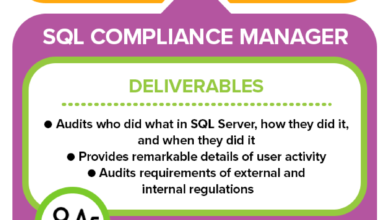Resource Allocation in Data Servers
Resource allocation is a critical aspect of managing data servers efficiently and maximizing their performance. It involves the distribution and utilization of various resources like CPU, memory, disk space, and network bandwidth to ensure smooth and uninterrupted operations. In this blog article, we will delve into the intricacies of resource allocation in data servers, exploring the different strategies, challenges, and best practices involved in optimizing resource utilization.
Whether you are a system administrator, a data scientist, or an IT professional, understanding resource allocation is crucial for maintaining the smooth functioning of your data servers. By effectively allocating resources, you can improve the overall efficiency, scalability, and reliability of your system, resulting in enhanced performance and reduced downtime. In the following sections, we will discuss key aspects of resource allocation in data servers, providing you with valuable insights to help you make informed decisions for your organization.
Types of Resources in Data Servers
Resource allocation in data servers encompasses various types of resources that play a crucial role in maintaining optimal performance. Let’s explore each of these resources in detail:
CPU
The Central Processing Unit (CPU) is the brain of a data server, responsible for executing instructions and performing calculations. Proper allocation of CPU resources is essential to ensure that all applications and processes receive the necessary computing power for efficient execution. In resource allocation, CPU can be divided into cores and threads, and their distribution among different tasks can greatly impact server performance.
Memory
Memory, also known as Random Access Memory (RAM), is another critical resource in data servers. It temporarily stores data that is actively being processed by the CPU, providing fast access and reducing the need for disk I/O operations. Efficient allocation of memory ensures that applications have sufficient space to store and manipulate data, preventing bottlenecks and improving overall system responsiveness.
Disk Space
Disk space refers to the storage capacity available on the server’s hard drives or solid-state drives (SSDs). It is essential for storing data, applications, and operating systems. Proper allocation of disk space involves considering the storage requirements of different applications and ensuring adequate space for data growth and backups.
Network Bandwidth
Network bandwidth refers to the capacity of the server’s network connection to transmit data. It is crucial for data servers that handle high volumes of network traffic. Allocating sufficient network bandwidth ensures that applications can communicate seamlessly and that data can be transferred efficiently between servers and clients.
In this section, we have explored the different types of resources typically allocated in data servers. Understanding the importance of each resource and their impact on server performance is key to effective resource allocation.
Factors Influencing Resource Allocation
Resource allocation decisions are influenced by various factors that need to be considered to strike the right balance and ensure optimal utilization. Let’s dive into the factors that play a significant role in resource allocation:
Workload Characteristics
The characteristics of the workload running on the data server significantly influence resource allocation decisions. Workloads can vary in terms of CPU, memory, disk, and network requirements. For example, a data-intensive workload may require more memory and disk space, while a computationally intensive workload may require more CPU resources. Understanding the workload characteristics helps in allocating resources appropriately.
Server Capacity
The available capacity of the data server is an essential factor to consider when allocating resources. Understanding the server’s capabilities and limitations enables you to make informed decisions about how much of each resource can be allocated without overloading the system. It is crucial to ensure that the allocated resources do not exceed the server’s capacity to avoid performance degradation or system crashes.
Application or Process Priority
Different applications or processes running on the data server may have varying levels of priority. Some applications may require more resources to function optimally, while others can operate with limited resources. By understanding the priority of each application or process, you can allocate resources accordingly, ensuring that critical tasks receive the necessary resources while preventing resource starvation for less important tasks.
Resource Utilization Monitoring
Continuous monitoring of resource utilization is crucial for effective resource allocation. By monitoring CPU, memory, disk, and network usage, you can identify resource bottlenecks, predict future resource needs, and optimize allocation. Monitoring tools and metrics provide valuable insights into resource utilization patterns, helping you make data-driven decisions to improve overall server performance.
In this section, we have explored the factors that influence resource allocation decisions. Understanding these factors enables you to make informed decisions and strike the right balance when allocating resources in your data servers.
Static vs. Dynamic Resource Allocation
Resource allocation can be categorized into two main approaches: static and dynamic. Each approach has its advantages and considerations, and the choice depends on the specific requirements and characteristics of your data server environment. Let’s delve into the details of static and dynamic resource allocation:
Static Resource Allocation
Static resource allocation involves pre-determining and allocating fixed resources to different applications or processes based on expected requirements. This approach assigns specific amounts of CPU, memory, disk space, and network bandwidth to each application or process. Static allocation provides predictability and stability, ensuring that each application receives a guaranteed amount of resources at all times. However, it may lead to underutilization of resources if the allocated amounts are not fully utilized by the applications or if the resource needs of the applications change dynamically.
Dynamic Resource Allocation
Dynamic resource allocation allows for real-time adjustments of resource allocation based on workload demands. This approach monitors the resource utilization of applications or processes and adjusts resource allocation accordingly. By dynamically allocating resources, you can optimize resource utilization and respond to changing workload patterns. Dynamic allocation techniques include load balancing, auto-scaling, and resource pooling. However, dynamic allocation introduces complexity and overhead, requiring robust monitoring and management systems to ensure efficient resource utilization.
Choosing the Right Approach
The choice between static and dynamic resource allocation depends on factors such as workload variability, resource utilization patterns, and the need for flexibility. Workloads with predictable resource requirements and stable resource utilization patterns may benefit from static allocation, providing stability and predictable performance. On the other hand, workloads with dynamic resource demands or varying workloads can benefit from dynamic allocation, allowing for efficient resource utilization and scalability.
In this section, we have explored static and dynamic resource allocation approaches. Understanding the characteristics and considerations of each approach helps you determine which method is most suitable for your data server environment.
Resource Allocation Algorithms
Resource allocation algorithms play a crucial role in optimizing resource utilization in data servers. These algorithms determine how resources are distributed among applications or processes, ensuring fair allocation and maximizing overall system efficiency. Let’s explore some popular resource allocation algorithms:
Round-Robin
The round-robin algorithm evenly distributes resources among applications or processes in a cyclical manner. Each application or process is allocated resources for a fixed time slice before moving on to the next one. This algorithm ensures fair allocation and prevents resource starvation for any particular application. However, it may not be suitable for workloads with varying resource requirements, as each application receives the same amount of resources regardless of its needs.
Least-Connection
The least-connection algorithm allocates resources to applications or processes based on their current connection load. It directs incoming requests to the application or process with the fewest active connections, ensuring that resources are evenly distributed based on the workload. This algorithm is particularly useful in load balancing scenarios where the goal is to distribute network traffic evenly across multiple servers.
Proportional-Share
The proportional-share algorithm allocates resources based on predefined shares assigned to each application or process. Each share represents a proportional portion of the available resources. Applications or processes with more shares receive a higher allocation of resources, ensuring that resource distribution aligns with their importance or priority. This algorithm allows for fine-grained control over resource allocation and is commonly used in virtualized environments.
Other Algorithms
Many other resource allocation algorithms, such as weighted fair queuing, lottery scheduling, and deadline-based scheduling, exist to address specific resource allocation requirements. Each algorithm has its own set of advantages and considerations, making them suitable for different scenarios and environments. It is important to assess the specific needs and characteristics of your data server environment before choosing an allocation algorithm.
In this section, we have explored popular resource allocation algorithms. Understanding these algorithms provides you with insights into how resources can be distributed among applications or processes to maximize efficiency and fairness.
Virtualization and Resource Allocation
Virtualization technologies, such as containerization and virtual machines, have revolutionized resource allocation in data servers. These technologies enable the creation of multiple virtual environments within a single physical server, allowing for efficient resource utilization and isolation. Let’s explore the impact of virtualization on resource allocation:
Containerization
Containerization is a lightweight virtualization technology that allows applications to run in isolated containers with their own runtime environment. Each container has its own allocated resources, including CPU, memory, and disk space. Containerization provides efficient resource allocation by isolating applications and preventing resource conflicts. It enables fine-grained resource control and allows for dynamic allocation of resources based on container needs.
Virtual Machines (VMs)
Virtual Machines (VMs) emulate an entire operating system and run multiple instancesof guest operating systems on a single physical server. Each VM has its own allocated resources, including CPU, memory, disk space, and network bandwidth. Virtualization allows for flexible resource allocation, as resources can be dynamically adjusted based on the needs of each VM. It enables efficient utilization of hardware resources by consolidating multiple virtual environments onto a single physical server.
Benefits of Virtualization
Virtualization offers several benefits when it comes to resource allocation in data servers:
1. Improved Resource Utilization: Virtualization allows for better utilization of hardware resources by running multiple virtual environments on a single physical server. This consolidation reduces resource wastage and increases overall efficiency.
2. Increased Flexibility: Virtualization enables dynamic allocation of resources, allowing you to adjust resource allocation based on the needs of each virtual environment. This flexibility ensures that resources are allocated where they are most needed, maximizing performance.
3. Enhanced Scalability: Virtualization simplifies the process of scaling your data server environment. With virtual machines or containers, you can easily add or remove instances as workload demands change, ensuring that resources are scaled up or down accordingly.
4. Resource Isolation: Virtualization provides isolation between different virtual environments, preventing resource conflicts. Each virtual machine or container has its own allocated resources, ensuring that one virtual environment does not impact the performance of others.
5. Simplified Management: Virtualization technologies often come with management tools that simplify resource allocation and monitoring. These tools provide a centralized interface to allocate, monitor, and manage resources across multiple virtual environments.
Challenges in Virtualized Resource Allocation
While virtualization offers numerous benefits for resource allocation, it also presents some challenges:
1. Overallocation: Virtualization makes it easier to allocate more resources than necessary to virtual environments. Overallocation can lead to wasted resources and reduced overall efficiency. Proper monitoring and management are required to avoid overallocation.
2. Resource Contention: In virtualized environments, multiple virtual environments share the same physical resources. This can lead to resource contention, where different virtual environments compete for the same resources. Careful allocation and monitoring are necessary to mitigate contention and ensure fair resource distribution.
3. Performance Monitoring and Optimization: Virtualized environments require continuous monitoring and optimization to ensure optimal performance. Monitoring tools and performance analysis techniques are essential for identifying bottlenecks, resource constraints, and areas for improvement.
Ngadsen test2
4. Complexity: Virtualization introduces additional layers of complexity to the resource allocation process. It requires expertise in managing virtual machines or containers, as well as the underlying virtualization infrastructure. Adequate training and knowledge are necessary to effectively manage and allocate resources in virtualized environments.
In this section, we have explored the impact of virtualization on resource allocation in data servers. Understanding the benefits and challenges of virtualization enables you to make informed decisions and leverage virtualization technologies for efficient resource utilization.
Monitoring and Managing Resource Allocation
Monitoring and managing resource allocation is crucial for maintaining optimal performance and efficiency in data servers. Let’s delve into the key aspects of monitoring and managing resource allocation:
Monitoring Tools
Various monitoring tools are available to measure resource utilization in data servers. These tools provide insights into CPU usage, memory consumption, disk I/O operations, network traffic, and other performance metrics. Some popular monitoring tools include Nagios, Zabbix, Prometheus, and Grafana. These tools enable real-time monitoring, alerting, and analysis of resource utilization trends.
Performance Metrics
Monitoring resource allocation involves tracking performance metrics to understand how resources are utilized. Key performance metrics include CPU utilization, memory usage, disk I/O latency, network bandwidth utilization, and response times. By monitoring these metrics, you can identify resource bottlenecks, optimize allocation, and ensure that applications have the necessary resources to perform optimally.
Capacity Planning
Capacity planning involves forecasting resource needs based on historical data and future growth projections. It helps you anticipate resource requirements and allocate resources accordingly. By analyzing workload patterns, growth trends, and performance metrics, you can ensure that data servers have sufficient resources to handle increasing demands without compromising performance.
Optimization Techniques
Optimizing resource allocation involves identifying inefficiencies and making adjustments to improve overall performance. Techniques such as load balancing, workload consolidation, and resource reservation can help optimize resource utilization. Load balancing distributes workload evenly across multiple servers, ensuring that resources are utilized efficiently. Workload consolidation involves consolidating multiple workloads onto a single server to maximize resource usage. Resource reservation allows you to allocate a specific amount of resources for critical applications or processes, ensuring they have guaranteed resources regardless of other demands.
Automation and Orchestration
Automation and orchestration tools enable streamlined resource allocation and management. These tools automate the provisioning, monitoring, and scaling of resources based on predefined rules and policies. By automating resource allocation, you can reduce human error, improve efficiency, and respond quickly to changing workload demands. Orchestration tools like Kubernetes and Docker Swarm provide container orchestration capabilities, allowing for efficient allocation and management of containerized applications.
Cloud-Based Resource Management
Cloud computing platforms offer robust resource management capabilities. Cloud providers like Amazon Web Services (AWS), Microsoft Azure, and Google Cloud Platform (GCP) provide tools and services for monitoring and managing resource allocation in virtualized environments. They offer features such as auto-scaling, resource tagging, and billing management, simplifying the process of allocating and managing resources in the cloud.
In this section, we have explored the key aspects of monitoring and managing resource allocation in data servers. By employing effective monitoring tools, analyzing performance metrics, engaging in capacity planning, optimizing resource utilization, and leveraging automation and cloud-based resource management, you can ensure efficient and effective resource allocation.
Challenges in Resource Allocation
Resource allocation in data servers comes with its fair share of challenges. Let’s explore some common challenges faced by organizations and strategies to overcome them:
Workload Variability
Workload variability poses a challenge in resource allocation, as different workloads have varying resource requirements. Some workloads may experience sudden spikes in resource demand, while others may have consistent but high resource requirements. To address workload variability, organizations can employ dynamic resource allocation techniques, such as auto-scaling or load balancing, to ensure that resources are allocated according to demand.
Competing Resource Demands
Multiple applications or processes may compete for the same resources, leading to resource contention. This contention can result in performance degradation or resource starvation for certain applications. To mitigate competing resource demands, organizations can prioritize critical applications, allocate resources based on importance or priority, and employ techniques like proportional-share resource allocation.
Unpredictable Workloads
Unpredictable workloads pose a challenge in resource allocation, as resource needs can fluctuate based on external factors or unexpected events. To handle unpredictable workloads, organizations can implement flexible resource allocation strategies, such as dynamic allocation or cloud-based auto-scaling, to ensure that resources can be adjusted in real-time based on workload demands.
Resource Overallocation
Overallocation of resources can occur when resources are allocated in excess of what is actually required. This can lead to wasted resources, increased costs, and reduced overall efficiency. To avoid overallocation, organizations can employ effective monitoring and capacity planning techniques to accurately assess resource needs and allocate resources accordingly.
Legacy Systems and Compatibility
Legacy systems may pose challenges in resource allocation, as they may have specific resource requirements or compatibility constraints. Integrating legacy systems with modern resource allocation techniques and ensuring compatibility can be a complex process. Organizations can address this challenge by conducting thorough compatibility assessments, implementing middleware or virtualization technologies, or gradually transitioning to more modern systems.
Optimizing Resource Allocation
Optimizing resource allocation requires continuous monitoring, analysis, and adjustment. It is an ongoing process that involves understanding the unique needs and characteristics of your data server environment. By regularly assessing performance metrics, identifying bottlenecks, optimizing allocation algorithms, and staying informed about emerging technologies and best practices, organizations can continuously improve resource allocation and ensure optimal performance.
In this section, we have explored common challenges in resource allocation and strategies to overcome them. By addressing these challenges, organizations can optimize resource utilization and enhance the performance of their data servers.
Best Practices for Resource Allocation
Based on industry expertise and practical experience, here are some best practices for resource allocation in data servers:
1. Understand Workload Requirements
Gain a deep understanding of the resource requirements of different workloads running on your data servers. Analyze historical data, workload characteristics, and performance metrics to determine the optimal allocation of resources for each workload.
2. Use Monitoring Tools
Implement robust monitoring tools to continuously track resource utilization and performance metrics. Real-time insights into resource usage enable proactive identification of bottlenecks, capacity planning, and optimization of resource allocation.
3. Implement Dynamic Allocation
Consider implementing dynamic resource allocation techniques, such as load balancing, auto-scaling, or proportional-share allocation. Dynamic allocation allows for efficient utilization of resources by adjusting allocation based on workload demandsand priorities.
4. Prioritize Critical Applications
Identify critical applications or processes that require guaranteed resources and allocate resources accordingly. By prioritizing critical applications, you ensure that they have the necessary resources to function optimally, even during peak workload periods.
5. Conduct Capacity Planning
Regularly assess your data server’s capacity and forecast resource needs based on historical data and future growth projections. Capacity planning enables you to allocate resources effectively and avoid resource constraints or overprovisioning.
6. Optimize Resource Allocation Algorithms
Explore and optimize the resource allocation algorithms used in your data server environment. Consider factors such as fairness, efficiency, and workload characteristics when selecting or fine-tuning allocation algorithms to ensure optimal resource utilization.
7. Embrace Virtualization Technologies
Leverage virtualization technologies like containerization or virtual machines to improve resource allocation and utilization. Virtualization provides flexibility, scalability, and efficient isolation of resources, enabling better allocation and management of resources in data servers.
8. Regularly Review and Adjust Resource Allocation
Continuously review and adjust resource allocation based on changing workload demands, performance metrics, and business requirements. Regularly analyze resource utilization patterns and make necessary adjustments to ensure optimal allocation and avoid resource bottlenecks.
9. Stay Informed About Emerging Technologies
Keep up-to-date with emerging technologies, trends, and best practices in resource allocation. Stay informed about advancements in virtualization, cloud computing, and automation tools that can enhance resource allocation and improve server performance.
10. Foster Collaboration Between IT and Business Teams
Promote collaboration between IT and business teams to gain a comprehensive understanding of resource requirements. By aligning resource allocation decisions with business goals and priorities, you can optimize resource allocation and ensure that resources are allocated where they provide the most value.
By following these best practices, organizations can optimize resource allocation in their data servers, leading to improved performance, scalability, and efficiency.
The Future of Resource Allocation
As technology advances and data volumes continue to grow, the future of resource allocation in data servers is bound to evolve. Here are some emerging trends and technologies that will shape the future landscape of resource allocation:
1. Artificial Intelligence and Machine Learning
Artificial intelligence (AI) and machine learning (ML) will play a significant role in resource allocation. AI and ML algorithms can analyze historical data, workload patterns, and performance metrics to predict future resource needs and automate resource allocation decisions. This predictive and automated approach will enhance resource allocation efficiency and optimize server performance.
2. Edge Computing
Edge computing, which involves processing data closer to the source rather than in centralized data centers, will impact resource allocation strategies. With edge computing, resource allocation will need to consider the distributed nature of computing resources and ensure efficient utilization of resources at the edge, where latency and bandwidth constraints may be present.
3. Hybrid and Multi-Cloud Environments
Hybrid and multi-cloud environments will continue to grow in popularity, necessitating resource allocation strategies that span across multiple cloud providers and on-premises infrastructure. Resource allocation in these environments will require comprehensive monitoring, centralized management, and efficient utilization of resources across different cloud platforms.
4. Automation and Orchestration
Automation and orchestration tools will become increasingly sophisticated, enabling more intelligent and efficient resource allocation. These tools will leverage AI and ML algorithms to automate resource allocation decisions, dynamically adjust resource allocation based on workload demands, and optimize resource utilization in real-time.
5. Green Computing and Energy Efficiency
Energy efficiency and sustainability will be key considerations in resource allocation. Organizations will focus on optimizing resource allocation to minimize energy consumption and reduce their carbon footprint. Resource allocation algorithms and management practices will be designed to prioritize energy-efficient utilization of resources.
6. Integration of Internet of Things (IoT)
The integration of IoT devices will introduce new challenges and opportunities in resource allocation. Resource allocation strategies will need to consider the unique requirements of IoT devices, such as low-latency processing and real-time analytics. Allocating resources efficiently to handle the influx of data from IoT devices will be crucial for optimal performance.
The future of resource allocation in data servers will be driven by advancements in AI, edge computing, hybrid and multi-cloud environments, automation, energy efficiency, and IoT integration. Staying informed about these trends and adapting resource allocation strategies accordingly will be essential for organizations to thrive in the evolving data-driven landscape.
Effective resource allocation is an ongoing process that requires continuous monitoring, adaptation, and optimization. By employing the right strategies, leveraging virtualization technologies, staying informed about emerging trends, and embracing automation and AI, organizations can unlock the full potential of their data servers and drive success in this data-driven era.



